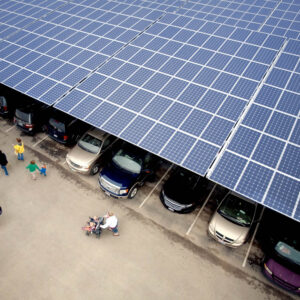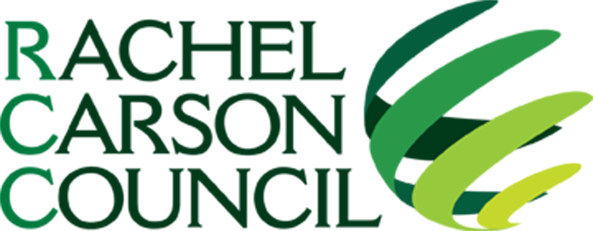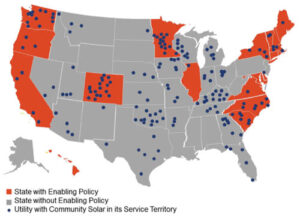What is Community Solar?
 Solar energy is the cheapest it’s ever been, 20-40% lower than anyone initially thought it would be. That’s great for solar developers and big companies that are looking to become more sustainable, but what could this mean for everyone else? What if your roof is not a viable option for solar panels? And solar panels can still be a costly choice for the average homeowner, even if the payback period is shorter than it has ever been. What if you can’t afford it? Enter community solar. Here’s what you need to know.
Solar energy is the cheapest it’s ever been, 20-40% lower than anyone initially thought it would be. That’s great for solar developers and big companies that are looking to become more sustainable, but what could this mean for everyone else? What if your roof is not a viable option for solar panels? And solar panels can still be a costly choice for the average homeowner, even if the payback period is shorter than it has ever been. What if you can’t afford it? Enter community solar. Here’s what you need to know.
What is community solar?
In general, its goal is twofold: equalize the opportunity for people to have access to solar power, and boost the usage of solar energy across the country. Community solar differs across the country. There is no one set model of what it is, and therefore it can be modified to satisfy the needs of different communities.
 How does it generally work?
How does it generally work?
- A site is identified as being viable for a large solar array. These arrays are typically less than 5 megawatts of power, but can vary greatly depending on community need and conditions. This site could be anywhere—a large rooftop, farmland, or even over a parking garage.
- Members of the community “subscribe” to this solar power. This subscription does not come with any additional costs—in fact, it saves you money. All this subscription means is that you are signing up for a specific portion of the solar array. This energy will be fed to the electrical grid that will eventually power your residence.
- Because your home is technically being powered by a solar array, the energy is cheaper than it would be from just any power source. Therefore, you will be purchasing energy from your utility at a lower rate—your monthly energy bill will be lower than it is now. The discount that you receive will be proportional to the amount of solar your portion of the array produced each month.
Community solar guidelines could be the key to a rapidly expanding solar world. It’s a win-win-win. You get to pay less for your energy each month, the world is benefitting from cleaner energy, and you don’t need to pay any of those upfront costs to install any physical panels. Community solar is the future.
 RCC Fellow — Sara Heimlich — Tulane University
RCC Fellow — Sara Heimlich — Tulane University
RCC Fellow Sara Heimlich is a senior at Tulane University majoring in Environmental Studies and Political Science, with minors in History and Psychology.
![]() The Rachel Carson Council depends on tax-deductible gifts from concerned individuals like you. Please help if you can.
The Rachel Carson Council depends on tax-deductible gifts from concerned individuals like you. Please help if you can.
![]() Sign up here to receive the RCC E-News and other RCC newsletters, information and alerts.
Sign up here to receive the RCC E-News and other RCC newsletters, information and alerts.







